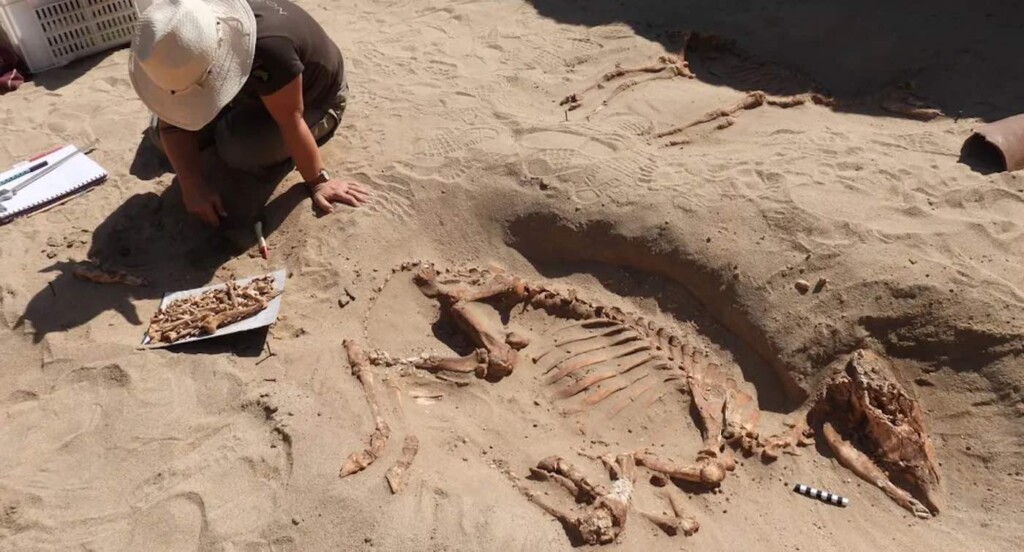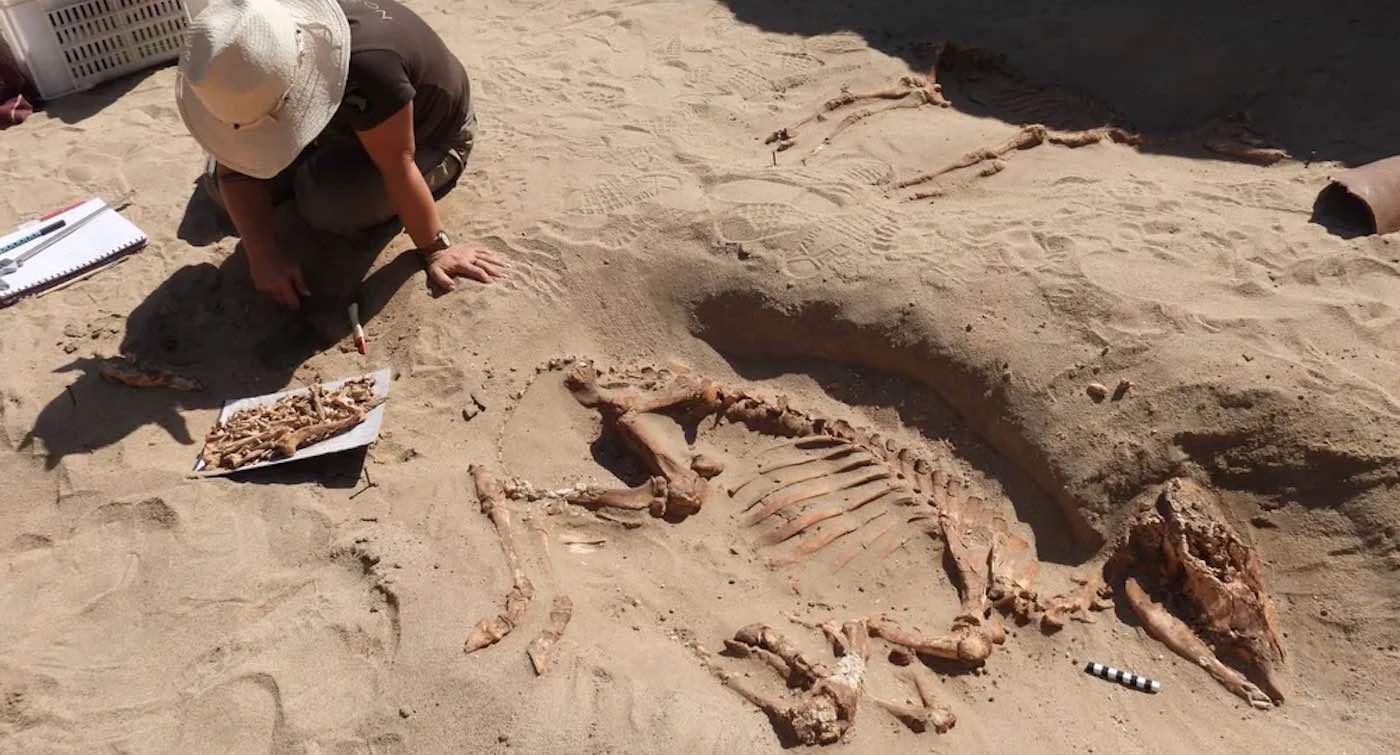
Classical Egypt was controlled by the Roman Empire for 600 years, and in the excavations of a pet cemetery, archaeologists from Poland are discovering fascinating insights into the lives of the legionaries who lived there.
Alongside the remains of beloved animals, letters on papyrus written by Roman centurions, or commanders, detail trade and military organization in the province.
The skeletons of more than 200 cats, dogs, calves, and monkeys were found in specially-made graves where they were preserved with care and effort.
“Berenike, located on the Red Sea in Egypt, was an ancient port in decline after its initial success in importing elephants from the south,” a statement on the excavations from the University of Wrocław reads.
“The emporium became an intercontinental hub for the empire, through which exclusive goods from India, Asia, Arabia, and East Africa flowed – says researcher Professor Marta Osypińska.”
This is also testified in the words of the Roman centurions Lucinius and Petronius. In one letter, Petronius asks Lucinius, who was stationed in Berenike about the prices of some of the exotic luxury goods there. Petronius writes that he’s sending money via “dromedarius.”
This was a unit of Roman soldiers that traveled on camels, and for their arrival Petronius requests “veal and tentpoles” for his men, Smithsonian reports.

The Romans who lived here seemed to favor owning macaques from two different species native to India as pets. This could only mean that they arrived via the Indian Ocean and Red Sea, and would have likely been an expensive import that conveyed status as well as offered companionship.
Interestingly, monkeys, very rare elsewhere in the Roman provinces, were very abundant at this site, the statement says, and the fact that their status was special and they were treated as almost humans is evidenced, according to the researchers, by the different burial methods compared to dogs and cats.
ALSO CHECK OUT FROM ROMAN HISTORY: Spy Satellite Photos Reveal Hundreds of Long-Lost Roman Forts, Challenging Decades-Old Theory
Only monkey graves have furnishings. These seem to be mostly objects for play: iridescent shells, knobbly things, a cow’s tail but also collars or harnesses. Quite often, monkeys were buried with their own pets, the researchers believe.
“Among the standout graves was one in which a female macaque had been buried with a beautiful, large haliotis shell from the Indian Ocean next to her head. The entire burial was covered with a reed mat, backfilled with dune sand, and a tombstone of large amphora fragments was laid on the surface.”
MORE ROMAN EXCAVATIONS: Archaeologists May Have Found the Villa Where the Roman Emperor Augustus Died
“The almost humane treatment of the monkeys is also evidenced by traces of [what] can be seen as medical treatment. One of the macaques had its feet covered in balsam resin. In antiquity, it was regarded as a healing and painkilling agent. It was also used in embalming and anointing the bodies of the dead.”
It’s a fascinating image—the Roman centurion in his red, gold, and purple armor and trappings of command, but with a monkey on his shoulder. Such a discovery, which for other civilizations would be one of the most informative and important ever found, is for Rome somewhat normal because of her vast size and incredible organization.
SHARE This Incredible Insight Into Roman Egypt With Your Friends…




















